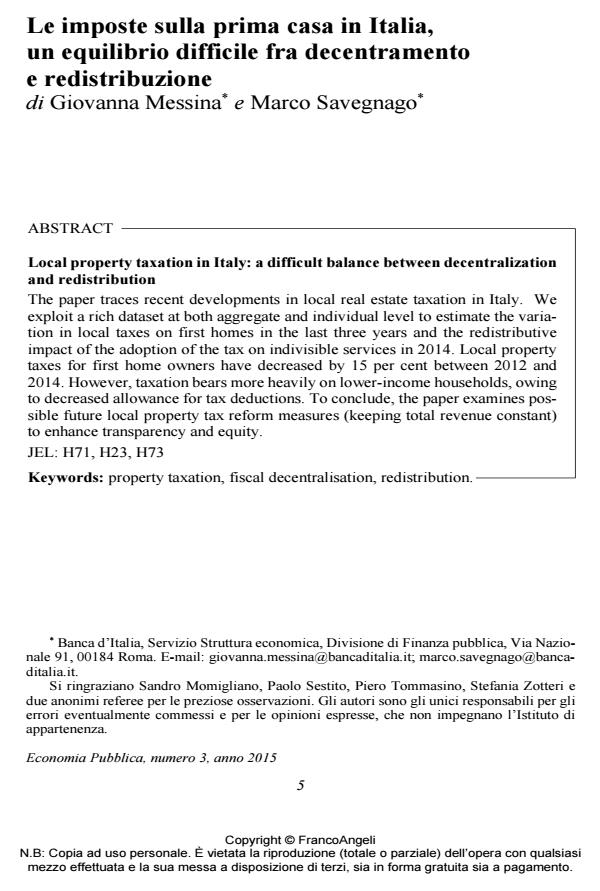Local property taxation in Italy: a difficult balance between decentralization and redistribution
Journal title ECONOMIA PUBBLICA
Author/s Giovanna Messina, Marco Savegnago
Publishing Year 2016 Issue 2015/3
Language Italian Pages 25 P. 5-29 File size 313 KB
DOI 10.3280/EP2015-003001
DOI is like a bar code for intellectual property: to have more infomation
click here
Below, you can see the article first page
If you want to buy this article in PDF format, you can do it, following the instructions to buy download credits

FrancoAngeli is member of Publishers International Linking Association, Inc (PILA), a not-for-profit association which run the CrossRef service enabling links to and from online scholarly content.
The paper traces recent developments in local real estate taxation in Italy. We exploit a rich dataset at both aggregate and individual level to estimate the variation in local taxes on first homes in the last three years and the redistributive impact of the adoption of the tax on indivisible services in 2014. Local property taxes on first homes average one fifth lower in 2014 than in 2012; including waste disposal taxes, the overall local fiscal burden remains broadly stable. However, taxation bears more heavily on lower-income households, owing to decreased allowance for tax deductions. To conclude, the paper examines possible future local property tax reform measures (keeping total revenue constant) to enhance transparency and equity.
Keywords: property taxation; fiscal decentralisation; redistribution
- BIMic: The Bank of Italy Microsimulation Model for the Italian Tax and Benefit System Nicola Curci, Marco Savegnago, Marika Cioffi, in SSRN Electronic Journal /2017
DOI: 10.2139/ssrn.3056279 - On the Unintended Effects of Public Transfers: Evidence from EU Funding to Southern Italy Ilaria De Angelis, Guido de Blasio, Lucia Rizzica, in SSRN Electronic Journal /2018
DOI: 10.2139/ssrn.3210783
Giovanna Messina, Marco Savegnago, Le imposte sulla prima casa in Italia, un equilibrio difficile fra decentramento e redistribuzione in "ECONOMIA PUBBLICA " 3/2015, pp 5-29, DOI: 10.3280/EP2015-003001